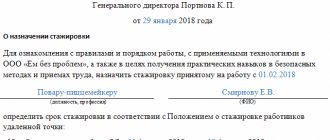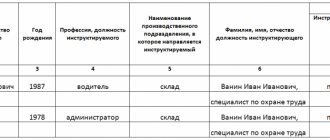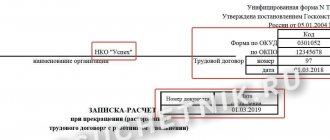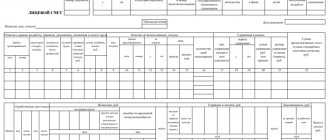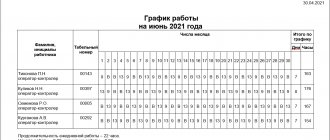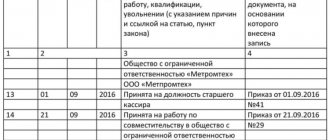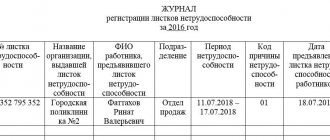Is it necessary to write a memo regarding the absence of an employee?
A memo against an employee is a document that is drawn up for the offending employee in order to convey to management information about his disciplinary action.
Along with this form, the responsible persons also draw up an act on the employee’s absence from the workplace, which accurately records the time of absence, measures taken to establish the employee’s location and other information.
After both of these documents are transferred to the manager, he can study the circumstances of the incident and make a decision on early termination of the employment contract with the employee due to absenteeism.
But such a step requires complete and accurate execution of all supporting documents, so it is best to prepare a report not “retroactively,” but immediately at the moment this violation is discovered.
You must first make sure that this is not a forced absence, for example, due to illness. Therefore, you must first try to contact the employee and find out the reason for the absence. And if the connection cannot be established, or the employee cannot reliably explain the reason, proceed to the procedure of dismissal for absenteeism.
The law does not contain a mandatory requirement for drawing up a memorandum. In this situation, it is just another document confirming absenteeism, and also conveys information to management. If the company is small, then it may not be formed, since the director usually has the opportunity to see and control the work activities of each of his subordinates.
On the other hand, registration is desirable in the case where the employee has not been at his place for more than four hours, and the administration wants to fire him for violating labor discipline.
The report can include not only information about the offense committed by the employee, but also recommend to management the degree of punishment. This is important in large companies, when the administration may not know all the employees by sight, or the immediate boss wants to mitigate the punishment for him. In this situation, a note will help to correctly assess the situation and choose an adequate punishment.
Attention! Information about possible punishment should be of an advisory nature only, since the final decision on dismissal lies with the manager, and he can make a decision without taking into account the opinions of subordinates.
The importance of drawing up a note increases if, in addition to disciplinary liability, management also wants to bring the employee to financial responsibility. The report will be included in the package of supporting documents and may contain all the necessary information.
bukhproffi
Important! A report is an information document, and therefore its preparation is not enough to properly justify dismissal due to absenteeism. The main form that will record the absence of an employee is the act of absence of the employee from the workplace.
You might be interested in:
Certificate of non-receipt of a one-time benefit at the birth of a child: how and where to get a certificate, how to draw it up
Download the report on employee absenteeism
| ★ Collection and directory of all personnel documents (forms and documents in word format) > 1200 books purchased |
To organize personnel records in a company, beginner HR officers and accountants are perfectly suited to the author’s course by Olga Likina (accountant M.Video management) ⇓
| ★ Author's course “Automation of personnel records using 1C Enterprise 8” (more than 30 step-by-step video lessons for beginners with instructions) purchased > 2000 practical courses |
Who should write the report?
The law does not determine which employee is given the right to draw up a report on the absenteeism of another. In theory, anyone can do this. In practice, it is necessary to observe the principle of subordination.
In this regard, reports are usually drawn up by the truant’s immediate supervisor. He knows his subordinates best, and it is he who should, first of all, try to find out why one of the employees did not show up for work.
If the manager is inactive, then any other employee can write a note. For example, the absence of an intruder affected the performance of another department (the adjuster did not show up, and because of this, the work of the workshop or machine stopped). In this situation, the “injured” party may submit a report to the manager.
If the enterprise is small and there is no division into departments, then a personnel officer or a specialist responsible for maintaining time sheets can draw up a report - after all, by the nature of his duties, he must record the appearance or absence of each employee in the documents drawn up.
Author of the report
Theoretically, any employee of the organization has the right to write a memo. In practice, when presenting it, the principle of subordination is observed. The head of a structural unit writes a report addressed to the general director. Subordinate employees must resolve situations that arise first with their immediate superiors. And if it deems it necessary, it will bring the information to the attention of the management. It is acceptable to apply directly, but then the report must be endorsed by the immediate supervisor.
The exception is the case when the memo is drawn up in connection with a complaint against the head of the structural unit himself. In such cases, any employee can directly appeal to senior management.
Legal regulation of employee absence from the workplace
Part one of Article 189 of the “Labor Code of the Russian Federation” dated December 30, 2001 N 197-FZ provides the formulation of labor discipline, which is mandatory for all employees to obey the rules of conduct defined in the Labor Code of the Russian Federation.
Part one of Article 192 of the “Labor Code of the Russian Federation” dated December 30, 2001 N 197-FZ provides for disciplinary sanctions for committing an offense, such as: reprimand, reprimand, dismissal on appropriate grounds.
Article 193 The procedure for applying disciplinary sanctions “Labor Code of the Russian Federation” dated December 30, 2001 N 197-FZ reflects the deadlines for disciplinary sanctions.
Subparagraph “a” of paragraph 6 of Article 81 of the “Labor Code of the Russian Federation” dated December 30, 2001 N 197-FZ lists the grounds for termination of an employment contract at the initiative of the employer, even for a one-time case, for the following offenses: gross violation of labor duties (or labor discipline , terms of the employment contract, etc.), it also reflects the time that will be considered absenteeism (more than 4 hours in a row during a shift).
Also, the absence of an employee and punishments for such offenses can be reflected in a collective agreement, agreement, local regulations, or an employment contract.
Primary requirements
The explanatory note about absenteeism must include the following information:
- The name of the department, division in which the paper is compiled.
- The title is “Official (report) note.”
- Date of preparation and document number.
- Full name and position of the person being addressed.
- Full name and position of the absentee worker.
- Full name and position of the compiler.
- Date and time of the employee's absence. If the employee was absent for the entire working day, indicate the time from which and until what time he should have been in his place.
- Measures taken. For example, calling an employee to find out the reason for absence.
- The conclusion includes conclusions about the incident and a proposal for disciplinary action.
The presentation must adhere to a strict business style.
Who draws up the document?
An official or report on absenteeism must be drawn up by a person who, by virtue of his position, exercises direct control over the work process and employees:
- Production workshop foreman.
- Senior nurse in a medical institution.
- Senior manager.
- Secretary who keeps time sheets.
- Manager of a store, warehouse.
- Head of department.
- And other similar officials.
Recommendations for design
Like any business document, a memorandum must fundamentally comply with the requirements set out in GOST 6.30–2003 “Unified documentation systems. Unified system of organizational and administrative documentation. Documentation requirements."
IMPORTANT! If this document is drawn up incorrectly, it may be considered legally unreliable and, thus, will lose the force of evidence when resolving controversial issues.
We prepare an internal report
The internal memorandum can be written or printed on a regular A4 sheet. No special form is required for this. Details that are accepted for this type of internal documentation:
- the name of the unit addressing the note is located in the upper left corner;
- the recipient of the note - his full name (initials are enough) and position must be indicated in the upper right corner;
- the title of the document in capital letters in the middle of the sheet - REPORT NOTE (location on the left edge of the sheet margin is allowed);
- below is the date in the format dd.mm.yyyy in Arabic numerals - this is the day the document was signed;
- short summary of the report;
- content in three separate blocks;
- on the last line the signature of the author is placed with a transcript and the title of the position.
Features of the design of an external report
An external memo is an outgoing document. It must be drawn up on the organization’s letterhead. In addition to the information listed above, the external report must contain the following information:
- information about the sending organization;
- number assigned to the document;
- the city in which the report was compiled;
- subtitle (written below the title of the document and begins with the words “Regarding...” or “About...”).
The remaining elements - the title of the document, the addressee's data, the text of the report, the signature of the author - are drawn up in the same way as in the internal report.
conclusions
To summarize, it can be noted that the report is an important document, as it informs management about violations of labor discipline in the form of absenteeism.
It is recommended to fill out the note in a situation where an employee has not shown up for work for more than 4 hours. At the same time, you must make sure that he does not have valid reasons to explain such behavior.
Additional documents are attached to the report - an act, papers confirming possible damage due to the absence of an employee, an explanatory note if available. The entire package is transferred to management to consider the issue of imposing a disciplinary sanction for the violator.
How to write a note
Any employee can convey information that an employee is absent from his workplace to the manager.
The note can be in free form, handwritten or typed on a computer - it doesn’t matter. The main thing is that its content makes it clear:
- who is absent;
- where absent;
- during what period is absent.
On our website there is a form and a sample note that you can use in your work. You will need to enter the following information on the form:
- Full name, position of the manager in whose name the note is written, name of the organization;
- information about the author of the note: full name, position, department;
- date of the note;
- data of the employee who is absent, the time of his absence. The wording may be as follows: “I would like to bring to your attention that the cook of the finished products department, Tatyana Sergeevna Shornikova, today, May 12, 2023, was absent from her workplace from 08:00 to 12:00”;
- signature of the person who wrote the note.
If other persons witnessed the employee’s absence, they can be included in the text of the note by adding the following phrase to it: “The absence of T.S. Shornikova can be confirmed at work...” You will also need to indicate the positions of the mentioned employees.
The memo must be drawn up on the same day that the employee was absent or (if, for example, he did not show up for work at all) the next.
This is due to the fact that a month is allotted for the application of disciplinary measures against a truant from the moment the fact of truancy was discovered. During this time, the manager must take away the employee’s explanation and, if necessary, conduct an internal investigation to resolve the issue of the type of punishment.
